Take a vacation back to Washington as it was. The trip starts east of the mountains in Spokane ... Written and curated by Alan J. Stein; Produced by Alyssa Burrows. Postcards courtesy Alan J. Stein collection.
Wish You Were Here: Historic Postcards and Ephemera from around Washington
- By Alan J. Stein
- Posted 3/14/2003
- HistoryLink.org Essay 7032
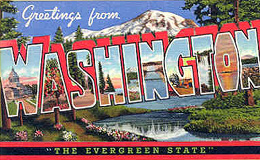
Greetings from Washington! This is a Slide Show postcard and ephemera tour of Washington state. Written and curated by Alan Stein. Produced by Alyssa Burrows.
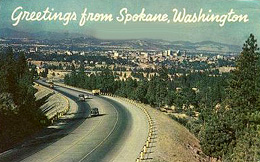
We begin our tour of Washington in Spokane, very near the stateÂ’'s eastern border. Spokane Falls, located in the heart of downtown, has played an important part in the city'Â’s history from the days of sawmills to Expo 74 and beyond.
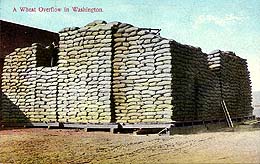
Eastern Washington is well-known for its bumper crops of wheat and apples. Those amber sacks of grain are the real thing, but the size of those apples might be a wee bit exaggerated.
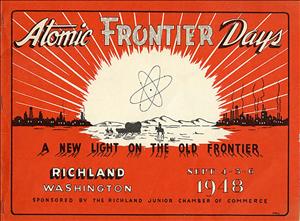
During World War II, the wild west town of Richland became home to thousands of workers at the Hanford Nuclear Reservation, which supplied materials for the top secret Manhattan Project.
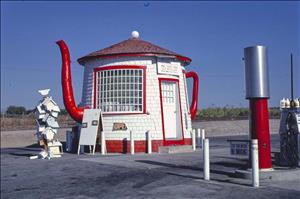
The Teapot Dome Gas Station, located in Zillah, was built in 1922 as a way of poking fun at the Teapot Dome scandals that plagued the administration of U. S. President Warren G. Harding.
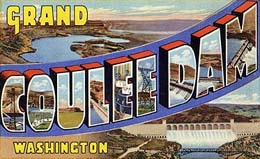
Construction of Grand Coulee Dam began in 1933. Nearly one mile long, the dam is the largest concrete structure in the United States, and is made of enough concrete to build a four-lane highway from coast to coast!

Some of the finest Washington apples, as well as other fruits and vegetables, are grown along the eastern borders of the Cascade Mountain range.
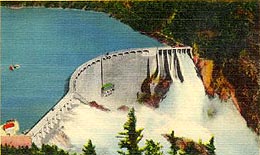
Park the family Woody Wagon and take a tram ride up the Skagit River. The awesome power of the riverÂ’'s waters was first harnessed in 1921, and today a series of hydroelectric dams produce 25 percent of electrical power consumed in Seattle, located 100 miles away.
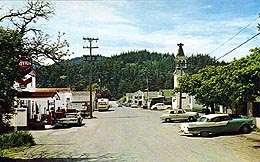
The San Juan Islands provide breathtaking views of Mount Baker, the ocean, and much more. In the small towns that dot the islands, life moves a lot slower than it does on the mainland --– just the way island residents like it.
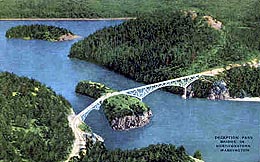
In 1792, Joseph Whidbey, under the command of Captain George Vancouver, circumnavigated the island that now bears his name. At the time, it was considered to be a peninsula, which led Captain Vancouver to choose the name Deception Pass for this waterway.
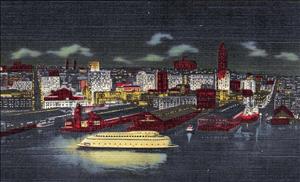
Seattle can be reached by ferry boat, bridge, highway, and skyway. Founded in 1851, it is now the largest city in the state.
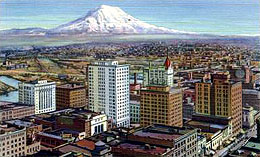
Tacoma is one of the main hubs on Puget Sound for Pacific Rim shipping, forest products, high technology, and the arts. In 1873, the town was chosen as the terminus for the Northern Pacific Railroad, and over the years has rivaled Seattle for its economic and cultural significance to the region.

At 14,411 feet, Mount Rainier is the highest mountain in the state, and the fifth-highest in the lower 48 states. For years, business leaders wanted to rename it Mount Tacoma, the Indian name for the peak, but in the end Seattle proponents won out.

When the Washington Territory was established in 1853, the town of Olympia was chosen as its capitol. The Washington State Capitol building, built in 1927, is one of the tallest masonry domes in the world.
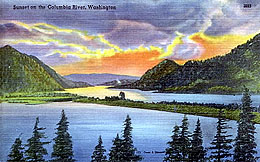
Humans have lived along the Columbia River for more than 10,000 years, making it one the most historically significant environmental features in the state. In recent years, the riverÂ’'s salmon runs have steeply declined, due to dams, increased fishing, and the deterioration of river habitats.

WashingtonÂ’'s southern coast has much to offer, from the oddities of MarshÂ’'s Museum in Long Beach, to the lure of ocean boating in Westport.

The Olympic Peninsula is one of the most outstanding scenic regions in the state. Sandy beaches, alpine meadows, lush rain forests, sparkling lakes, and abundant wildlife are just some of the natural treasures that can be found here.

Our tour ends with a sunset campfire at Ruby Beach, named for its pink sand made up of tiny grains of garnet. Although we'Â’ve seen some of the state'Â’s highlights along the way, thereÂ’'s plenty more to see and do in Washington state. Enjoy your travels, and be sure to drop us a postcard. Wish you were here!
Licensing: This essay is licensed under a Creative Commons license that encourages reproduction with attribution. Credit should be given to both HistoryLink.org and to the author, and sources must be included with any reproduction. Click the icon for more info. Please note that this Creative Commons license applies to text only, and not to images. For more information regarding individual photos or images, please contact the source noted in the image credit.
